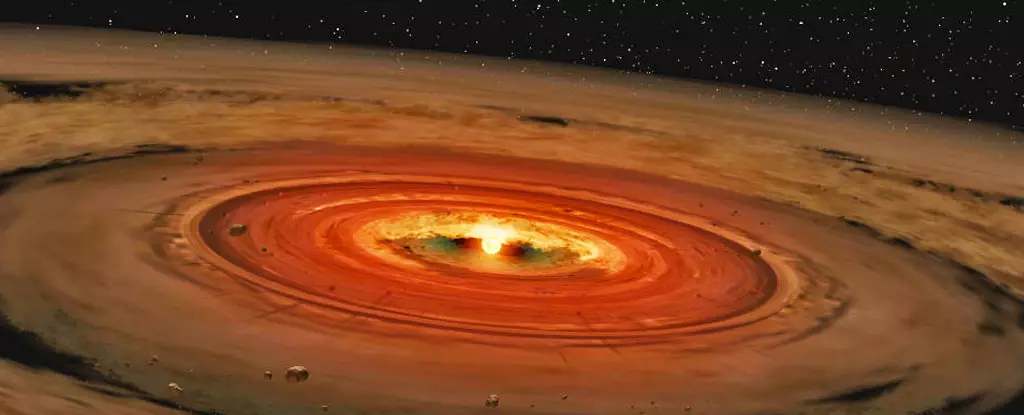Situated approximately 1,000 light-years away from Earth lies a mysterious cosmic structure that bears a striking resemblance to a giant butterfly, known as IRAS 23077+6707. Astronomer Ciprian T. Berghea first observed this structure back in 2016 through the Panoramic Survey Telescope and Rapid Response System (Pan-STARRS). What caught the attention of the scientific community was the fact that IRAS 23077 has remained unchanged over the years, prompting speculation about its nature and origin.
Recently, international teams of astronomers conducted follow-up observations using the Submillimeter Array at the Smithsonian Astrophysical Observatory (SAO) in Hawaii to gain a deeper understanding of IRAS 23077. Their observations led to a groundbreaking discovery – IRAS 23077 is, in fact, a young star surrounded by an exceptionally massive protoplanetary debris disk, the largest of its kind ever observed. This finding has significant implications for our understanding of planet formation and the environments conducive to it.
The observations detailed in the series of papers published by the international teams shed light on the nature of protoplanetary disks, which serve as breeding grounds for planets. These disks consist of gas and dust that aggregate around newly formed stars, eventually coalescing into protoplanets that will go on to form a diverse array of celestial bodies, from rocky planets to gas giants and icy comets. The discovery of IRAS 23077’s protoplanetary disk offers valuable insights into the processes underlying planet formation and the role of such disks in shaping planetary systems.
Challenges in Observing Protoplanetary Disks
One of the challenges astronomers face in studying protoplanetary disks is their orientation relative to Earth. Some disks, known as “face-on,” are fully visible to observers on Earth, while others, like IRAS 23077, are “edge-on,” obscuring the light emitted by the parent star. Despite this obstacle, researchers can still analyze the dust and gas signatures of these disks using instruments like the Submillimeter Array, which operates at millimeter wavelengths.
When the combined power of the Pan-STARRS and SAO teams was directed towards IRAS 23077, the results were nothing short of spectacular. Led by Kristina Monsch, the teams were astounded by the enormity and richness of the protoplanetary disk surrounding the young star. The data gathered by the Submillimeter Array provided irrefutable evidence of the disk’s presence and highlighted the abundance of dust and gas within it, essential building blocks for planetary formation.
The implications of discovering such an extensive and luminous protoplanetary disk are far-reaching. Astronomers are now faced with the challenge of uncovering similar structures in our galaxy to expand our knowledge of planetary systems in their infancy. Moreover, further study of IRAS 23077 is imperative to unravel the mysteries surrounding planet formation in extreme young environments and to compare these processes with exoplanet populations orbiting distant stars.
The exploration of IRAS 23077 has opened up new avenues of research in the field of astronomy, shedding light on the intricate processes that govern the birth of planets. This discovery serves as a testament to the power of scientific inquiry and underscores the importance of continued exploration of the cosmos to unravel its many mysteries.



Leave a Reply